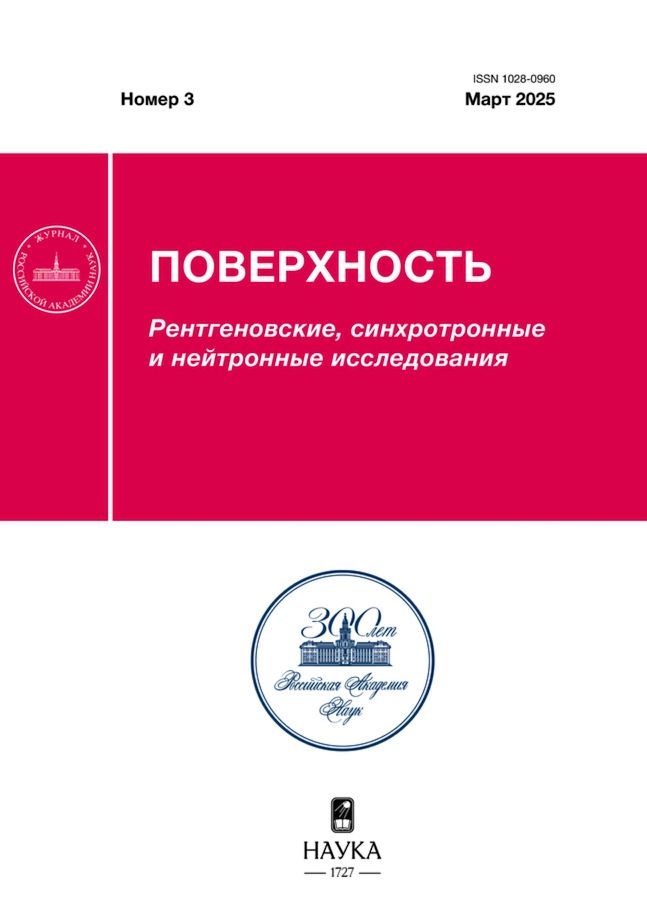Особенности отражения электронов слоем углеродных нанотрубок
- Авторы: Новиков Н.В.1, Чеченин Н.Г.1, Широкова А.А.1
-
Учреждения:
- Московский государственный университет им. М.В. Ломоносова, Научно-исследовательский институт ядерной физики им. Д.В. Скобельцына
- Выпуск: № 3 (2024)
- Страницы: 28-32
- Раздел: Статьи
- URL: https://vietnamjournal.ru/1028-0960/article/view/664667
- DOI: https://doi.org/10.31857/S1028096024030043
- EDN: https://elibrary.ru/hfxnzv
- ID: 664667
Цитировать
Полный текст
Аннотация
Исследованы анизотропные свойства слоя из углеродных нанотрубок при отражении электронов. Установлено, что только небольшая часть падающих электронов отражается от мишени с поверхностным слоем из ориентированных углеродных нанотрубок. Отражение происходит только от слоя горизонтально ориентированных нанотрубок при угле падения больше 80° и вертикально ориентированных нанотрубок при угле падения меньше 10°. Эффект объясняется особенностями формированием потока электронов в поверхностных слоях мишени.
Полный текст
Об авторах
Н. В. Новиков
Московский государственный университет им. М.В. Ломоносова, Научно-исследовательский институт ядерной физики им. Д.В. Скобельцына
Автор, ответственный за переписку.
Email: nvnovikov65@mail.ru
Россия, 119991, Москва
Н. Г. Чеченин
Московский государственный университет им. М.В. Ломоносова, Научно-исследовательский институт ядерной физики им. Д.В. Скобельцына
Email: nvnovikov65@mail.ru
Россия, 119991, Москва
А. А. Широкова
Московский государственный университет им. М.В. Ломоносова, Научно-исследовательский институт ядерной физики им. Д.В. Скобельцына
Email: nvnovikov65@mail.ru
Россия, 119991, Москва
Список литературы
- Макунин А.В., Чеченин Н.Г. Полимер-наноуглеродные композиты для космических технологий. Ч. 1. М.: Университетская книга, 2011. 150 с.
- Елецкий А.В. // УФН. 2006. Т. 177. № 3. С. 233.
- Новиков Л.С., Воронина Е.Н. Взаимодействие космических аппаратов с окружающей средой. М: КДУ, Университетская книга, 2021. 560 с.
- Salleh N., Ghazali N., Yhaya M.F., Fridaus M. // Int. J. Polymeric Mater. 2009. V. 58. № 7. Р. 384.
- Бронштейн И.М., Фрайман Б.С. Вторичная электронная эмиссия. М.: Наука, 1969. 407 с.
- Рид С.Дж.Б. Электронно-зондовый микроанализ и растровая электронная микроскопия в геологии. М.: Техносфера, 2008. 229 с.
- Vos M., Chatzidimitrious-Dreismann C.A., Abdul-Redah T., Mayers J. // Nucl. Instrum. Methods Phys. Res. B. 2005. V. 227. P. 233.
- Калашников Н.П., Ремизович В.С., Рязанов М.И. Столкновения быстрых заряженных частиц в твердых телах. М.: Атомиздат, 1980. 272 с.
- Тилинин И.С. // ЖЭТФ. 1982. Т. 82. Вып. 4. С. 1291.
- Baro J., Sempau J., Fernandez-Varea J.M., Salvat F. // Nucl. Instrum. Methods Phys. Res. B. 1995. V. 100. P. 31.
- Sempau J., Fernandez-Varea J.M., Acosta E., Salvat F. // Nucl. Instrum. Methods Phys. Res. B. 2003. V. 207. P. 107. https://doi.org/10.1016/S0168-583X(03)00453-1
- Seral-Ascaso A., Garriga R., Sanjuán M. L., Razal J.M., Lahoz R., Laguna M., Fuente G.F., Muñoz E. // Nanoscale Res. Lett. 2013. V. eight. P. 233.
Дополнительные файлы













